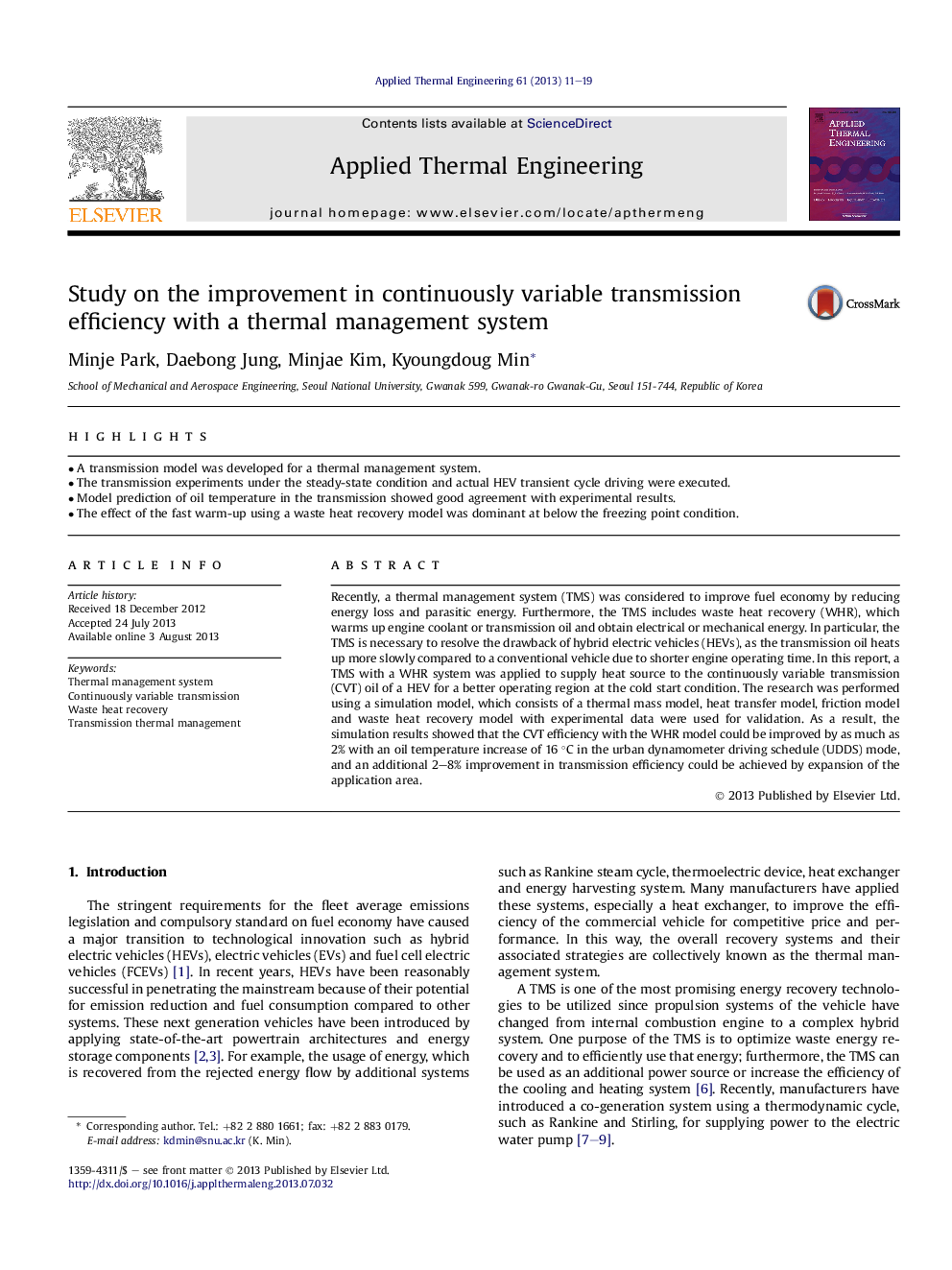| Article ID | Journal | Published Year | Pages | File Type |
|---|---|---|---|---|
| 646554 | Applied Thermal Engineering | 2013 | 9 Pages |
•A transmission model was developed for a thermal management system.•The transmission experiments under the steady-state condition and actual HEV transient cycle driving were executed.•Model prediction of oil temperature in the transmission showed good agreement with experimental results.•The effect of the fast warm-up using a waste heat recovery model was dominant at below the freezing point condition.
Recently, a thermal management system (TMS) was considered to improve fuel economy by reducing energy loss and parasitic energy. Furthermore, the TMS includes waste heat recovery (WHR), which warms up engine coolant or transmission oil and obtain electrical or mechanical energy. In particular, the TMS is necessary to resolve the drawback of hybrid electric vehicles (HEVs), as the transmission oil heats up more slowly compared to a conventional vehicle due to shorter engine operating time. In this report, a TMS with a WHR system was applied to supply heat source to the continuously variable transmission (CVT) oil of a HEV for a better operating region at the cold start condition. The research was performed using a simulation model, which consists of a thermal mass model, heat transfer model, friction model and waste heat recovery model with experimental data were used for validation. As a result, the simulation results showed that the CVT efficiency with the WHR model could be improved by as much as 2% with an oil temperature increase of 16 °C in the urban dynamometer driving schedule (UDDS) mode, and an additional 2–8% improvement in transmission efficiency could be achieved by expansion of the application area.
